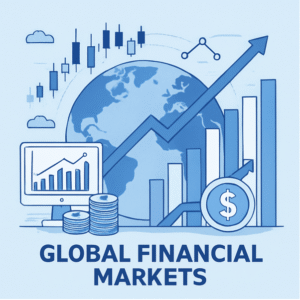Sovereign wealth funds have become some of the most influential investors in modern finance. These state-owned vehicles deploy national surpluses—often from natural resources, persistent current-account surpluses, or accumulated foreign exchange reserves—into diversified, professionally managed portfolios. Their mission stretches beyond profit: to secure long-term returns, stabilize domestic economies, diversify national income, and convert temporary windfalls into enduring wealth.
What Sovereign Wealth Funds Are Designed to Do
At their core, these funds transform cyclical revenues into lasting financial assets. Governments channel excess income into entities that hold global equities, investment-grade bonds, real estate, infrastructure, private equity, private credit, and other alternatives. The logic is straightforward: diversify the national balance sheet, build buffers for downturns, and compound capital through disciplined, long-horizon investing. Unburdened by short-term liabilities, large funds can ride out volatility, lean into dislocations, and harvest long-dated risk premia that are out of reach for investors with shorter timeframes.
Objectives That Reach Beyond Returns
Stabilize public finances. When commodity prices fall or recessions compress tax receipts, sovereign wealth funds can provide liquidity to support budgets and essential services, smoothing the business cycle and preserving social cohesion.
Save for future generations. By converting non-renewable revenues into diversified portfolios, funds ensure today’s windfalls translate into tomorrow’s prosperity, protecting national wealth even after a resource base declines.
Diversify national income. Investing across sectors and regions reduces exposure to domestic shocks, insulates the economy from single-commodity risk, and broadens the sources of growth.
Catalyze domestic development. Many funds co-invest in infrastructure, technology, healthcare, housing, and digital networks, crowding in private capital and raising long-term productivity.

How the Biggest Funds Tend to Operate
Large funds usually separate ownership from management: the state sets the mandate, while a professional entity executes it. Boards approve strategic asset allocation and risk appetite; internal teams and external managers handle security selection and portfolio operations. Governance frameworks emphasize transparency, audited reporting, clear benchmarks, and compensation tied to risk-adjusted outcomes. This structure protects the investment process from political interference, enhances credibility with citizens and markets, and supports consistent execution across cycles.
Profiles Without Names: Archetypes Among the Giants
To keep this overview brand-neutral, consider five archetypes that together represent much of the world’s sovereign wealth asset base:
-
Commodity-backed savings fund in a high-income economy. Financed by hydrocarbon revenues, it allocates globally to listed equities, sovereign and corporate bonds, and core real estate. It stresses low cost, explicit ethical guidelines, and active ownership to promote responsible conduct.
-
Reserve-diversification fund in a major export economy. Seeded with foreign exchange reserves, it seeks higher long-term returns than traditional reserve management by adding public equities, private equity, infrastructure platforms, and technology partnerships aligned with national industrial priorities.
-
Legacy investment authority from an energy-exporting region. Established decades ago, it manages a multi-asset portfolio with broad geographic spread and a pronounced long-term horizon, partnering with top managers and acting as a stabilizing anchor investor through multiple market cycles.
-
First-mover fund from another resource-rich state. Distinguished by early establishment and deep experience, it balances a global portfolio with targeted domestic stakes that support diversification into finance, logistics, and technology.
-
Strategic transformation fund in a large regional economy. Its mandate is to catalyze new industries—tourism, entertainment, renewable energy, advanced manufacturing—while developing infrastructure and flagship projects. It invests at home and abroad through joint ventures that import know-how, build supply chains, and create quality jobs.
Investment Playbook: Shared Disciplines
Diversification and risk management. The cornerstone is spreading exposure across asset classes, sectors, styles, and geographies. Many funds complement broad, often index-anchored core holdings with selective active tilts and balanced factor exposure—quality, value, momentum, size, and low volatility. Liquidity management is meticulous: pacing capital calls and distributions, maintaining buffers for fiscal needs, and matching illiquid commitments to the sovereign’s tolerance and horizon.
Long-horizon mindset. Freed from quarterly pressures, funds can invest in greenfield infrastructure, core-plus real estate, private credit, and venture capital—areas where value creation unfolds over years. Patience enables counter-cyclical positioning: adding risk when valuations are depressed and trimming when markets become exuberant.
Macroeconomic stabilization. When external shocks hit—commodity collapses, capital-flow reversals, or global recessions—funds can supply liquidity to the sovereign, keeping planned investments on track and preventing disruptive austerity.
Domestic development catalysis. Parallel domestic programs co-invest with ministries, municipalities, and private sponsors to deliver roads, ports, power, water, telecoms, logistics, and social infrastructure. Well-structured deals crowd in private capital, improve productivity, and raise potential growth without displacing the local financial system.
ESG integration and stewardship. With scale comes influence. Many large funds publish stewardship frameworks, vote proxies, and engage with companies on climate disclosure, audit quality, labor standards, and board diversity. Real-asset teams evaluate physical climate risk and transition pathways; listed-equity teams scrutinize capital allocation and long-term incentives. Approaches differ, but the trajectory is toward integrating financially material environmental, social, and governance factors into underwriting and monitoring.
Where Size Meets Strategy: Market Impact
Collectively managing trillions means flows from these investors can move markets. Rebalancing affects broad equity indices; allocations to private credit or infrastructure can reshape fundraising cycles; and support for transition finance can consolidate pricing and standards. Size also creates constraints: deploying capital efficiently demands scale-appropriate vehicles, club deals, co-investments, and reliable pipelines of bankable projects. Partnerships with global managers, peer funds, development institutions, and operating platforms are therefore central to efficient execution.
Alternative Investments and Innovation
A clear pattern among the giants is a steady migration into alternatives.
-
Private equity provides control or influence over operational improvements, enabling excess-return potential beyond public benchmarks.
-
Real estate offers income, diversification, and partial inflation hedging through leases and supply-constrained assets.
-
Infrastructure grants visibility on long-dated, often regulated cash flows—transport, energy, utilities, and digital networks.
-
Private credit adds floating-rate income with structural protections and covenant packages tailored to risk.
-
Venture capital and growth equity create optionality on technological change, from software and semiconductors to climate solutions and life sciences.
To supervise these exposures, leading funds build in-house capabilities for manager selection, co-investment underwriting, portfolio value creation, secondaries, and risk analytics. Data platforms, scenario testing, and cash-flow modeling help reconcile illiquidity with fiscal resilience.

Why the Largest Funds Matter to Other Investors
For institutional partners—pension plans, insurers, endowments—large sovereign wealth funds are sources of patient capital with aligned horizons. Co-investments and separate accounts can lower fees and enhance control, while joint platforms open doors in emerging markets and specialized strategies. For corporations, these investors serve as strategic shareholders who bring capital, credibility, and market access. For startups and scale-ups, they can be cornerstone backers with the balance sheet to support multiple rounds and the network to accelerate commercialization.
Policy Interface and Regulatory Considerations
Host countries scrutinize sizable cross-border investments for national security and competition concerns. The most successful funds navigate this terrain by committing to high governance standards, demonstrating that they are commercial investors without political objectives, and accepting ring-fencing when sensitive technologies or infrastructure are involved. Early regulator engagement, robust compliance programs, and transparent reporting help sustain market access and trusted relationships.
How They Allocate Without Naming Names
Even without labels, common allocation patterns are visible across the peer group. Public equities often account for the largest slice, diversified globally and balanced across factors and sectors. Investment-grade fixed income provides ballast, liquidity, and a mechanism to manage currency and duration risk. Real assets—core real estate and regulated infrastructure—supply inflation linkage and stable cash flows. Private equity and growth strategies target excess returns via operational improvement and innovation. Private credit offers seniority, covenants, and floating-rate protection. Opportunistic sleeves—secondaries, structured solutions, and thematic funds—allow nimble responses to market dislocations.
The Domestic Lens: Building at Home While Investing Abroad
The most impactful funds pair global investing with targeted domestic programs that reinforce national development plans. That can mean equity stakes in national champions, anchor commitments to venture ecosystems, local manufacturing of strategic components, or partnerships that upskill the workforce. Success depends on strict investment discipline, clear governance, transparent tendering, and level playing fields that crowd in private capital rather than crowd it out. When executed well, the result is higher productivity, better jobs, and more diversified growth.
Current Themes Shaping the Giants
Several themes dominate boardroom agendas:
-
Energy transition. Utility-scale renewables, grid storage, transmission upgrades, electrification of transport and industry, and efficiency retrofits are attracting large commitments.
-
Digital infrastructure. Fiber, towers, data centers, submarine cables, and cloud adjacency continue to scale with data demand and compute intensity.
-
Supply-chain resilience. Logistics real estate, port capacity, rail links, and near-shoring of critical inputs are receiving increased focus.
-
Demographic shifts. Healthcare platforms, senior living, education technology, and workforce-enablement tools are rising in prominence.
-
Resilient food and water systems. Water infrastructure, precision agriculture, cold chains, and waste-to-value solutions are moving up the priority list.
Looking Ahead: The Next Decade
In the coming years, the largest sovereign wealth funds are likely to deepen direct investing, expand thematic platforms around climate and digital transformation, and refine portfolio construction for a regime of higher volatility and geopolitical fragmentation. Expect continued emphasis on data science, climate scenario analysis, and dynamic hedging of currency and commodity exposures. Domestically, strategic vehicles will advance diversification agendas through tourism ecosystems, creative industries, advanced manufacturing, and knowledge-economy clusters. Internationally, partnerships will remain essential for sourcing, diligence, and execution at scale.
Conclusion
Even without naming names, it is clear that the world’s largest sovereign wealth funds function as stabilizers, builders, and long-horizon compounding engines for their nations. Their scale, governance, and strategic patience allow them to underwrite projects and innovations that smaller pools of capital cannot easily support. For asset managers, corporations, and entrepreneurs, understanding how these investors allocate, manage risk, and partner is essential to navigating modern capital markets. As global challenges evolve—from decarbonization to digitalization—these funds will continue to anchor capital formation, bridge public and private priorities, and translate temporary windfalls into durable prosperity.

